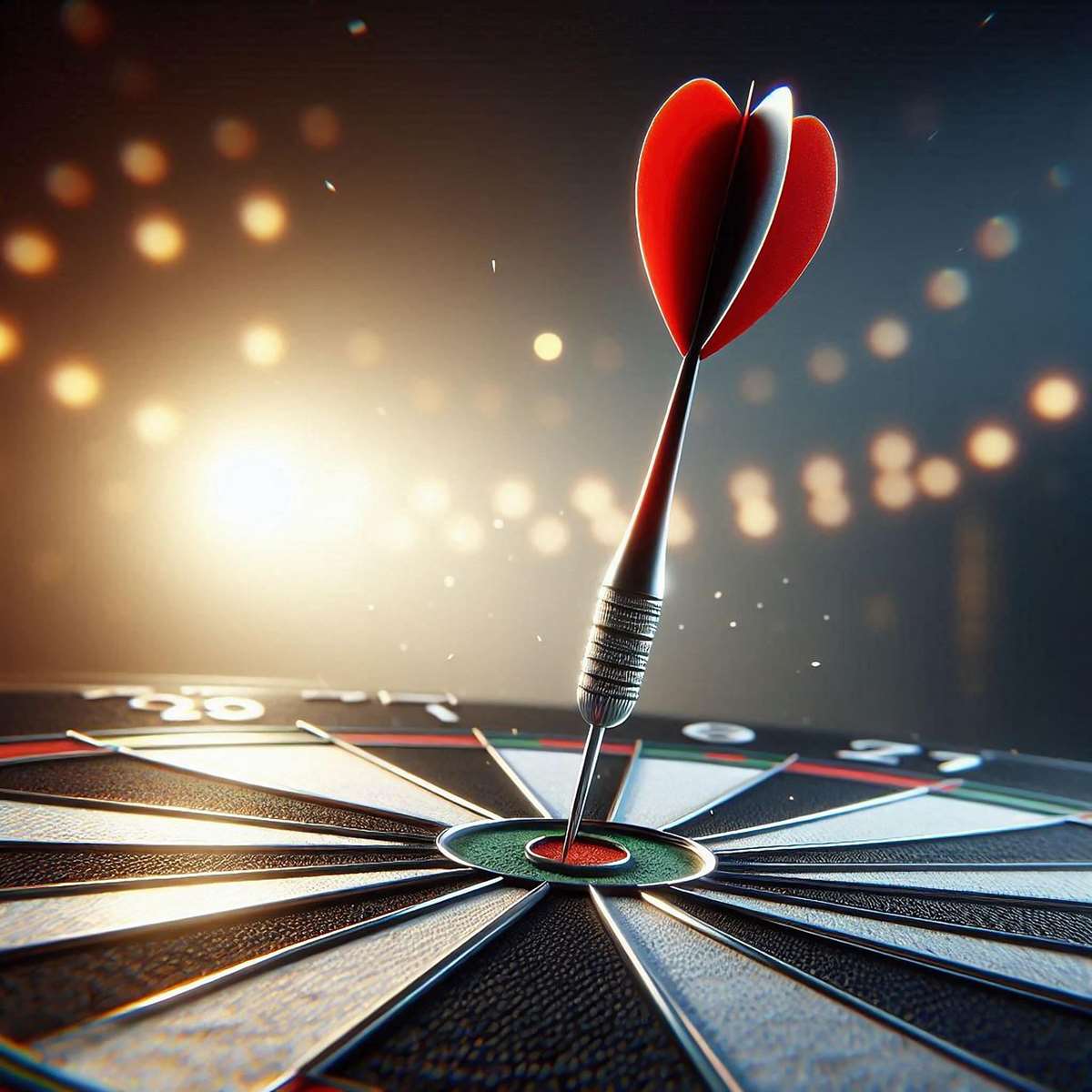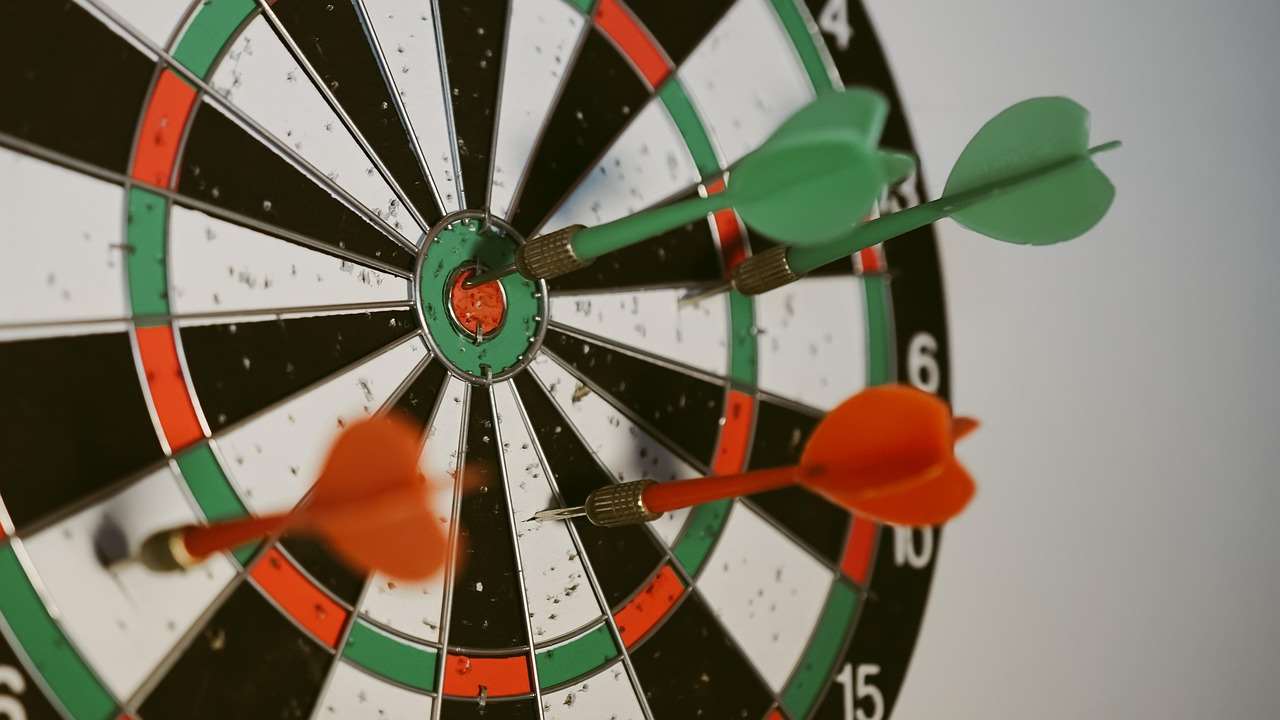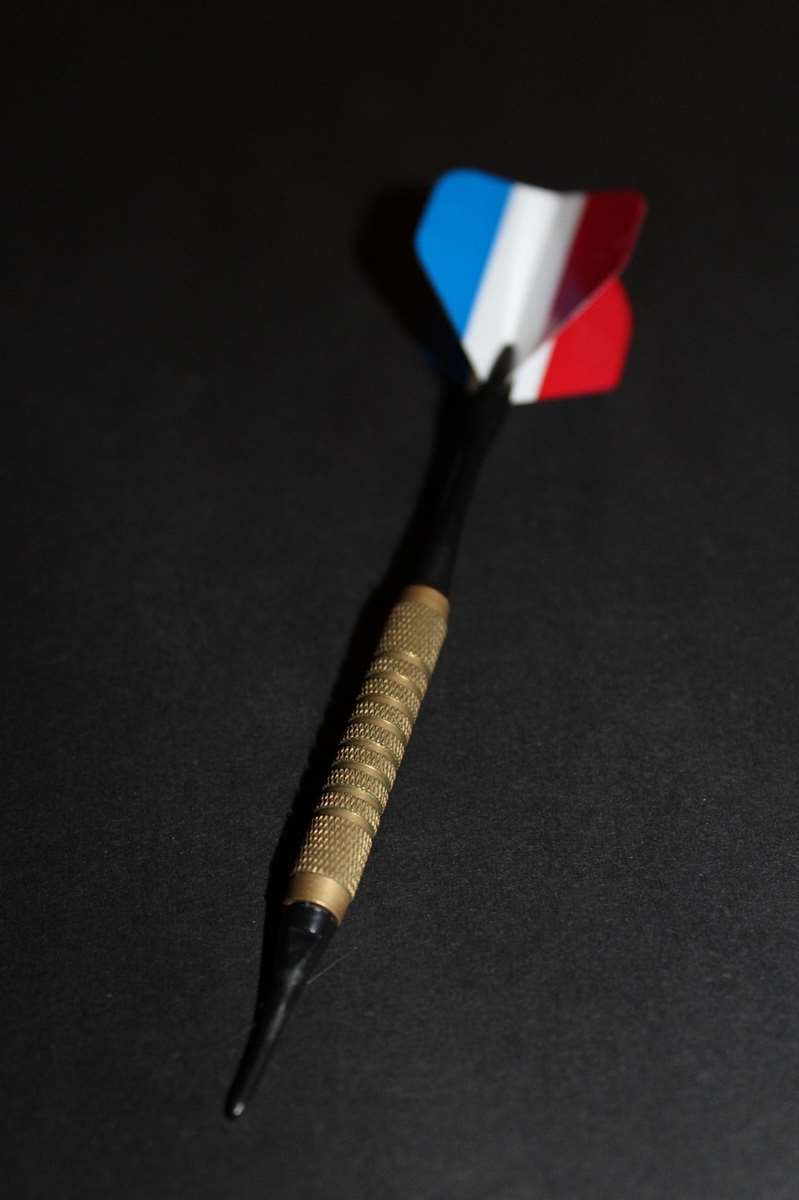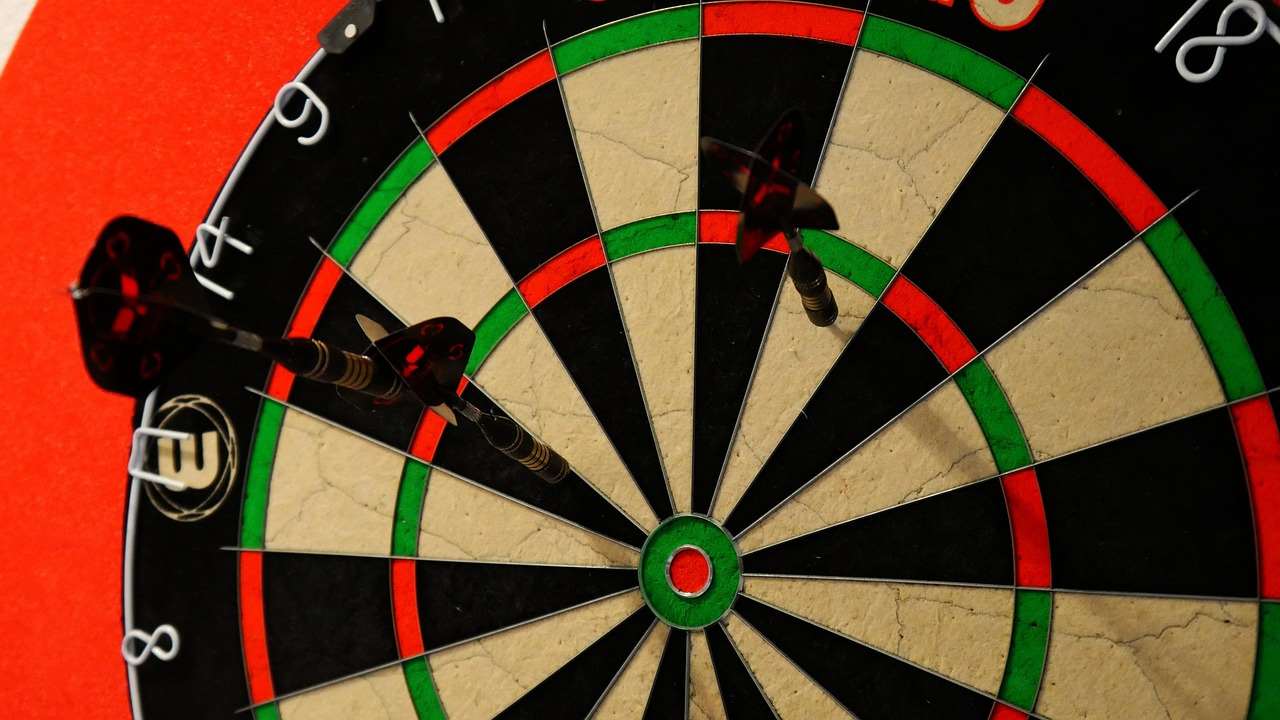Uncover the complete darts history timeline facts, tracing the game’s evolution from its humble origins to the global phenomenon it is today. This article will explore the key milestones, pivotal figures, and rule changes that have shaped the sport over centuries.
⚠️ Still Using Pen & Paper (Of een schoolbord)?! ⚠️
Stap in de toekomst! De Dart Teller -app behandelt alle scoren, stelt kassa voor, en volgt uw statistieken automatisch. It's easier than you think!
Probeer de Smart Dart Teller -app gratis!Klaar voor een upgrade? Klik hierboven!
The Genesis of Darts: Early Darts History Timeline Facts
The exact origins of darts are shrouded in mystery, but most historians agree that it evolved from archery. Soldiers in medieval England, possibly as early as the 14th century, are believed to have thrown shortened arrows or spears at the bottoms of upturned wine barrels or tree trunks. This rudimentary game provided amusement and skill practice during downtime. Imagine those early days – no precisely marked boards, just a rough target and a bit of friendly competition. These informal games eventually moved indoors, particularly in taverns and pubs, where the game’s popularity continued to grow.
Several interesting theories surround the name “darts.” One suggests it derives from the French word “dard,” meaning a small, pointed missile. Another attributes it to the Dart River in Devon, England, where the game was supposedly popular. Whatever the true etymology, the name stuck, and it perfectly encapsulates the nature of the game itself: precision throwing of small projectiles.

The Development of the Dartboard
The standardization of the dartboard is a fascinating tale of ingenuity and regional variations. Early dartboards were often simply sections of elm trees, which naturally cracked as they dried, creating a pattern of segments. The numbering system on these early boards was haphazard, varying widely from place to place. It wasn’t until the late 19th century that a more consistent system began to emerge.
Brian Gamlin and the Standard Numbering System
Credit for the now-standard numbering arrangement on the dartboard is widely given to Brian Gamlin, a carpenter from Lancashire, England. In 1896, he is said to have devised the seemingly random sequence designed to penalize inaccurate throws. The high numbers are positioned next to low numbers, so even a slight miscalculation can result in a drastically lower score. This clever design added a layer of strategic complexity to the game. The number 20 is placed between 1 En 5, ensuring that sloppy throws are severely punished. Understanding this history provides insights into the strategic element of playing darts, impacting how one approaches the game. You can also delve into the Basic Darts Fundamentals for Beginners to understand more basic gameplay and rules.
Darts History Timeline Facts: The 20th Century and Beyond
The 20th century witnessed the formalization of darts as a recognized sport. Several key events contributed to this transformation:
- 1924: The National Darts Association (NDA) was formed in England, aiming to standardize rules and promote the game nationally. This marked a significant step towards professionalization.
- 1930S: Darts gained immense popularity in pubs throughout Britain, becoming an integral part of pub culture. The game’s accessibility and social nature made it a perfect fit for these establishments.
- World War II: Darts provided a popular form of entertainment for soldiers during the war, further spreading its reach.
- 1954: De News of the World Individual Darts Championship, a major national competition, was established, attracting huge crowds and media attention.
- 1970S: Television coverage dramatically increased the profile of darts. Players like Eric Bristow, Jocky Wilson, and John Lowe became household names, turning darts into a spectator sport.

The Split and the Rise of the PDC
In the early 1990s, a major split occurred within the darts world. Dissatisfied with the management of the British Darts Organisation (BDO), a group of leading players broke away to form the World Darts Council (WDC), later renamed the Professional Darts Corporation (PDC). This split led to the existence of two separate world championships, the BDO World Darts Championship and the PDC World Darts Championship.
The PDC, with its emphasis on marketing and professionalism, quickly became the dominant force in the sport. Players like Phil Taylor, arguably the greatest darts player of all time, helped elevate the game to new heights of popularity. The PDC’s focus on high-profile events, television coverage, and player development transformed darts into a lucrative and globally recognized sport. De Adapting darts rules for small spaces: tips and tricks can help if you decide to play in a less traditional venue.
Modern Darts: Globalization and Innovation
Today, darts is a truly global sport, with players from all over the world competing at the highest level. The PDC World Darts Championship is a major international event, attracting millions of viewers worldwide. The game’s popularity has also extended to other continents, with strong darting communities emerging in North America, Europa, and Asia.
Technological Advancements and the Future of Darts
Technological advancements have also played a role in the evolution of darts. Electronic dartboards, with their automatic scoring and computerized features, have become increasingly popular, particularly for casual play. These boards offer a convenient and accessible way to enjoy the game, making it easier for beginners to learn and practice. Verder, the use of sophisticated data analytics has revolutionized the way professional players train and strategize. By analyzing their throwing patterns and identifying areas for improvement, players can optimize their performance and gain a competitive edge. Even when using Alternative darts rules for home play, technology can enhance gameplay.

Key Figures in Darts History Timeline Facts
Several individuals have left an indelible mark on the history of darts. These pioneers and champions have shaped the game and inspired generations of players:
- Brian Gamlin: As mentioned earlier, Gamlin is credited with inventing the standard dartboard numbering system, which remains in use today.
- Jim Pike: A legendary player in the early 20th century, Pike dominated the darting scene and helped popularize the game.
- Eric Bristow: “The Crafty Cockney” was a five-time world champion and one of the most charismatic figures in darts history. He played a crucial role in the sport’s rise to prominence in the 1980s.
- John Lowe: “Old Stoneface” was a three-time world champion and renowned for his calm demeanor and consistent play.
- Phil Taylor: “The Power” is widely regarded as the greatest darts player of all time, having won a record 16 world championships. His dominance and skill transformed darts into a truly professional sport.
- Michael van Gerwen: “Mighty Mike” is a three-time world champion and one of the most exciting players to watch, known for his explosive style and incredible scoring power.
Darts Equipment Evolution
The equipment used in darts has also undergone significant changes over the years. Early darts were often made from simple materials like wood and feathers. As the game evolved, darts became more sophisticated, with the introduction of steel-tipped darts and flights made from various materials.
From Wood to Tungsten: The Evolution of Darts
The development of tungsten darts was a major breakthrough, allowing for thinner barrels and tighter groupings. Modern darts are highly engineered, with a wide range of weights, shapes, and flight designs to suit individual player preferences. Choosing the right darts can significantly impact a player’s accuracy and consistency. Experimenting with different types of darts is essential for finding the perfect match. To make the game more accessible, overwegen Darts -regels aanpassen voor beginners with modified equipment.

Darts Rule Standardization
The standardization of darts rules has been crucial to the game’s development as a competitive sport. While informal rules may have prevailed in the early days, the establishment of governing bodies like the NDA and the PDC helped codify the rules and ensure fair play.
De 501 Game and its Variations
De 501 game, where players start with a score of 501 and must reduce it to zero by scoring with their darts, is the most widely played format in competitive darts. Echter, there are also numerous variations of the game, each with its own unique rules and challenges. Some popular variations include ’01 spellen, Cricket, and Around the World. These variations add variety and excitement to the game, catering to different skill levels and preferences. Many pubs and clubs host regular darts leagues and tournaments, providing opportunities for players of all abilities to compete and socialize. For less traditional competitions, you can apply fun dart game variations with modified rules.
The Social and Cultural Impact of Darts
Darts has had a significant social and cultural impact, particularly in Britain, where it is deeply ingrained in pub culture. The game provides a social outlet for people of all ages and backgrounds, fostering a sense of community and camaraderie. Darts nights are a common feature in many pubs, bringing people together to enjoy friendly competition and good company.

Darts: More Than Just a Game
Beyond the pub scene, darts has also made its mark on popular culture. The sport has been featured in numerous films, television shows, and books, further cementing its place in the public consciousness. Darts players have become celebrities in their own right, with their exploits regularly reported in the media. The game’s accessibility and appeal have made it a popular pastime for people around the world. Even when creative dart rules for parties and social gatherings are employed, the game’s underlying principles of skill and strategy remain the same.
Conclusie
De darts history timeline facts reveal a rich and fascinating story, tracing the game’s evolution from its humble beginnings to its current status as a global sport. From the invention of the standard dartboard to the rise of legendary players like Phil Taylor, darts has captured the imagination of millions. As technology continues to evolve and the sport expands to new markets, the future of darts looks brighter than ever. Ready to take your game to the next level? Visit our website to explore dart buying guides, practice drills, and expert tips to improve your accuracy and consistency. Start your journey today!
Hoi, Ik ben Dieter, En ik heb Dartcounter gemaakt (Dartcounterapp.com). Mijn motivatie was geen darts -expert - helemaal tegenovergestelde! Toen ik voor het eerst begon te spelen, Ik hield van het spel, maar vond het moeilijk en afleidend om nauwkeurige scores te houden en statistieken te volgen.
Ik dacht dat ik niet de enige kon zijn die hiermee worstelde. Dus, Ik besloot om een oplossing te bouwen: een eenvoudig te gebruiken applicatie die iedereen, Ongeacht hun ervaringsniveau, zou kunnen gebruiken om moeiteloos te scoren.
Mijn doel voor Dartcounter was eenvoudig: Laat de app de nummers afhandelen - het scoren, de gemiddelden, de statistieken, Zelfs checkout suggesties - zodat spelers puur kunnen richten op hun worp en genieten van het spel. Het begon als een manier om het probleem van mijn eigen beginners op te lossen, En ik ben heel blij dat het is uitgegroeid tot een nuttig hulpmiddel voor de bredere darts -community.